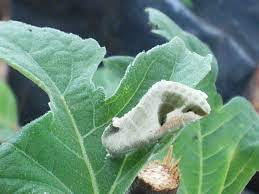Autobà(s) are like tiny but crucial threads in the vast fabric of nature, invisible but important to maintaining ecological harmony. These unremarkable insects help recycle nutrients and keep their environments healthy through decomposition.
AUTOBÀ CHARACTERISTICS
PHYSICAL ATTRIBUTES
The average size of an autobà is between a few millimeters and a centimeter. Their exoskeletons, which protect their segmented bodies, come in a rainbow of colors. These insects have six legs and a three-part body made up of a head, thorax, and abdomen, much like every other insect.
BEHAVIOR AND HABITS
Autobàs are nocturnal animals that like to go about their business under the cover of night. They prefer to spend their lonely, hidden existence away from bigger, more carnivorous insects.
Autobà Life Cycle
Autobàs go through a complete metamorphosis, consisting of four distinct stages:
EGG STAGE
An Autobà starts off as an egg that is deposited in a secret area. The eggs are often tiny and well-protected so that more of them will hatch.
LARVA STAGE
Autobà larvae are hatched and then emerge. These juvenile beetles have ravenous appetites and subsist mostly on dead and rotting things. The decomposition of dead plants relies heavily on this phase.
PUPA STAGE
The Autobà performs its metamorphosis from larva to adult inside a cocoon during the pupa stage. The adult insect cannot form without this phase.
ADULT STAGE
After developing within the pupa for some time, the adult Autobà emerges and resumes its ecological duties. They are essential in the cycle of recycling nutrients.
HABITAT AND DISTRIBUTION
Autobàs are ubiquitous in the world’s ecosystems. They do particularly well in settings with plenty of decomposing organic materials, such as compost heaps in cities and woods.
Autobà’s Role In The Ecosystem
AUTOBÀ AS DECOMPOSERS
These insects serve as nature’s recyclers by decomposing plant matter and releasing nutrients back into the ground.
IMPACT ON OTHER SPECIES
Autobàs efforts improve soil quality, which in turn encourages plant development and provide food for herbivores and omnivores, hence their labour indirectly helps other species.
Species
Autoba abrupta , Autoba acrapex , Autoba admota , Autoba alabastrata, Autoba angulifera, Autoba apicimacula, Autoba atriciliata, Autoba beraudi, Autoba brachygonia, Autoba castanea, Autoba coccidiphaga, Autoba costimacula, Autoba crassiuscula, Autoba curvata, Autoba dinawa, Autoba discata, Autoba dispar, Autoba fulvipennis, Autoba galactea, Autoba griseicosta, Autoba grisescems, Autoba indefinita, Autoba latericolor, Autoba latistriga, Autoba leucograpta, Autoba longiplaga, Autoba loxotoma, Autoba obscura, Autoba ochracea, Autoba ochreola, Autoba olivacea, Autoba pallescens, Autoba pallidistriga, Autoba pectorora, Autoba poliochroa, Autoba pulvinariae, Autoba quadrapex, Autoba quadripunctata, Autoba radda, Autoba reticulata, Autoba rubiginea, Autoba rubra, Autoba rufiplaga, Autoba rufipuncta, Autoba semirufa, Autoba silicula, Autoba sphragidota, Autoba subangulata, Autoba subcinerea, Autoba subolivalis, Autoba teilhardi, Autoba trilinea, Autoba tristalis, Autoba undilinea, Autoba versicolor, Autoba vestina, Autoba vinotincta
Threats And Predators
NATURAL PREDATORS
Autobàs have evolved to be excellent at hiding from their many potential predators, yet they are still vulnerable to being eaten by birds, small animals, and even other insects.
HUMAN-INDUCED THREATS
Destruction of habitat and the use of pesticides pose threats to Autobà populations.
Autobà’s Unique Adaptations
CAMOUFLAGE TECHNIQUES
To avoid being seen by predators, autobàs use techniques like imitation and camouflage.
DEFENSIVE MECHANISMS
Some Autobàs species have evolved defence measures including the release of toxic chemicals or offensive odours to ward off predators.
Autobà And Human Interaction
POSITIVE ASPECTS
Autobàs help people in the long run because they promote ecosystem health and agricultural soil quality.
NEGATIVE ASPECTS
Deforestation and the use of pesticides are two human actions that threaten Autobà populations and the ecosystems they support.
Conservation Efforts
WHY SHOULD WE PROTECT AUTOBÀS?
The protection of Autobàs requires an appreciation of the role it plays in the ecology. These insects are vital to the health of our ecosystem.
CONSERVATION INITIATIVES
The Autobà population is being studied and protected by a number of different groups and scientists. Habitat conservation include both protecting existing habitats and raising public awareness of their value.
Interesting Facts About Autobà
AUTOBÀ DIVERSITY
Autobàs come in a wide variety of species, each of which has evolved to a particular ecological niche and geographic area.
ROLE IN FOLKLORE AND CULTURE
A variety of symbols and ideas in numerous cultures have been represented by autobàs in folklore and cultural legends.
THE INTRIGUING WORLD OF AUTOBÀS
They are the unsung heroes of the environment, working tirelessly at decomposition to keep the wheel of life turning.
Conclusion
Even though autobàs don’t get much credit, they are crucial to the health of our ecosystems. These little insects are the unsung heroes of the natural world, playing a crucial role in nutrient recycling and plant development.
FAQS
- First of all, how important is Autobàs to the environment as a whole??
- Autobàs are important because they breakdown dead vegetation and recycle the soil’s nutrients.
- Are Autobàs restricted to the woods?
- The meadows and urban compost heaps are not the only places where Autobàs may flourish. The meadows and urban compost heaps are not the only places where Autobàs may flourish.
- Thirdly, how do Autobàs avoid being eaten by predators?
- • Autobàs use various methods of concealment and, in certain circumstances, create noxious odours or chemicals to ward off potential predators.
- Is Autobàs the subject of any conservation initiatives?
- Yes, several groups and researchers are trying to learn more about and safeguard Autobà populations and their natural environments.
- Is there any cultural importance to Autobàs?
- Across cultures and time periods, Autobàs have been used to represent a wide range of ideas and ideals.
Note:
Are you a content creator? If yes then we welcome bloggers to contribute to our famous blog, just search in google “ write for us”, You will find “lifeyet news”.
Are you passionate about sharing your insights and expertise? We invite you to write for us! Whether you’re a seasoned writer or just starting out. We’re looking for fresh perspectives on a variety of topics, from lifestyle and wellness to technology and travel.
 Lifeyet News Lifeyet News
Lifeyet News Lifeyet News





